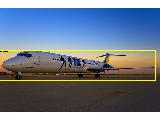 |
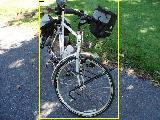 |
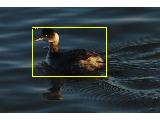 |
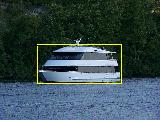 |
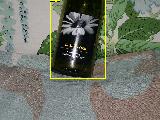 |
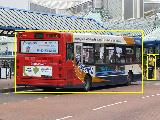 |
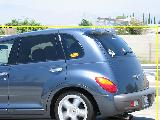 |
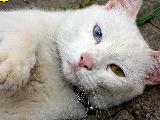 |
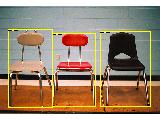 |
 |
Visual Object Classes Challenge 2012 (VOC2012)
 |
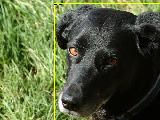 |
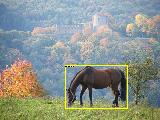 |
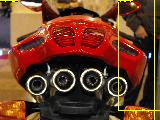 |
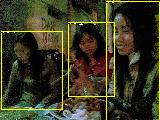 |
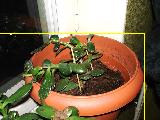 |
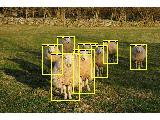 |
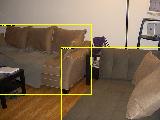 |
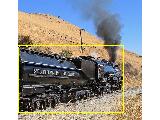 |
 |
| [click on an image to see the annotation] | |||||||||
 |
 |
 |
 |
 |
 |
 |
 |
 |
 |

 |
 |
 |
 |
 |
 |
 |
 |
 |
 |
| [click on an image to see the annotation] | |||||||||
The main goal of this challenge is to recognize objects from a number of visual object classes in realistic scenes (i.e. not pre-segmented objects). It is fundamentally a supervised learning learning problem in that a training set of labelled images is provided. The twenty object classes that have been selected are:
There are three main object recognition competitions: classification, detection, and segmentation, a competition on action classification, and a competition on large scale recognition run by ImageNet. In addition there is a "taster" competition on person layout.
| 20 classes | ||||||||||
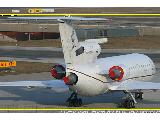 |
 |
 |
 |
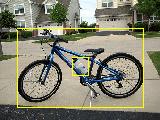 |
 |
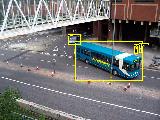 |
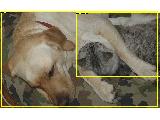 |
 |
 |
|
 |
 |
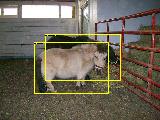 |
 |
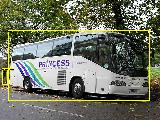 |
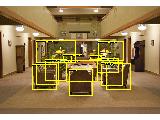 |
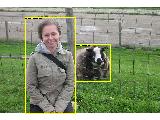 |
 |
 |
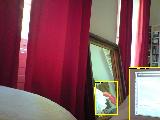 |
|
Participants may enter either (or both) of these competitions, and can choose to tackle any (or all) of the twenty object classes. The challenge allows for two approaches to each of the competitions:
The intention in the first case is to establish just what level of success can currently be achieved on these problems and by what method; in the second case the intention is to establish which method is most successful given a specified training set.
| Image | Objects | Class | |

|

|
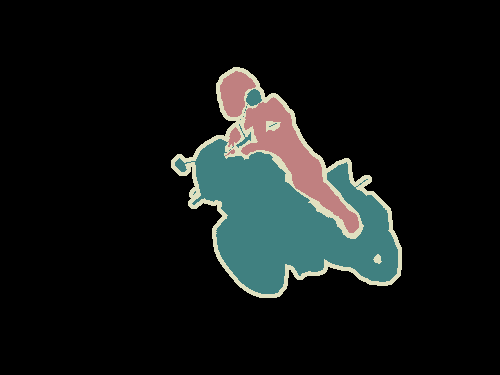
|
|
| 10 action classes + "other" | ||||||||||
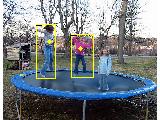 |
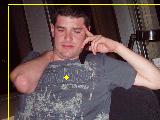 |
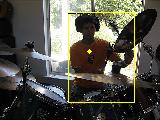 |
 |
 |
||||||
 |
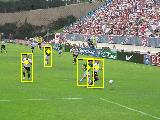 |
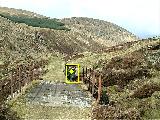 |
 |
 |
||||||
In 2012 there are two variations of this competition, depending on how the person whose actions are to be classified is identified in a test image: (i) by a tight bounding box around the person; (ii) by only a single point located somewhere on the body. The latter competition aims to investigate the performance of methods given only approximate localization of a person, as might be the output from a generic person detector.
The goal of this competition is to estimate the content of photographs for the purpose of retrieval and automatic annotation using a subset of the large hand-labeled ImageNet dataset (10,000,000 labeled images depicting 10,000+ object categories) as training. Test images will be presented with no initial annotation - no segmentation or labels - and algorithms will have to produce labelings specifying what objects are present in the images. In this initial version of the challenge, the goal is only to identify the main objects present in images, not to specify the location of objects.
Further details can be found at the ImageNet website.
| Image | Person Layout | |

|

|
|
To download the training/validation data, see the development kit.
The training data provided consists of a set of images; each image has an annotation file giving a bounding box and object class label for each object in one of the twenty classes present in the image. Note that multiple objects from multiple classes may be present in the same image. Annotation was performed according to a set of guidelines distributed to all annotators.
A subset of images are also annotated with pixel-wise segmentation of each object present, to support the segmentation competition.
Images for the action classification task are disjoint from those of the classification/detection/segmentation tasks. They have been partially annotated with people, bounding boxes, reference points and their actions. Annotation was performed according to a set of guidelines distributed to all annotators.
Images for the person layout taster, where the test set is disjoint from the main tasks, have been additionally annotated with parts of the people (head/hands/feet).
The data will be made available in two stages; in the first stage, a development kit will be released consisting of training and validation data, plus evaluation software (written in MATLAB). One purpose of the validation set is to demonstrate how the evaluation software works ahead of the competition submission.
In the second stage, the test set will be made available for the actual competition. As in the VOC2008-2011 challenges, no ground truth for the test data will be released.
The data has been split into 50% for training/validation and 50% for testing. The distributions of images and objects by class are approximately equal across the training/validation and test sets. Statistics of the database are online.
Example images and the corresponding annotation for the classification/detection/segmentation/action tasks, and person layout taster can be viewed online:
For VOC2012 the majority of the annotation effort was put into increasing the size of the segmentation and action classification datasets, and no additional annotation was performed for the classification/detection tasks. The list below summarizes the differences in the data between VOC2012 and VOC2011.
The development kit consists of the training/validation data, MATLAB code for reading the annotation data, support files, and example implementations for each competition.
The development kit is now available:
The test data will be made available according to the challenge timetable. Note that the only annotation in the data is for the action task and layout taster. As in 2008-2011, there are no current plans to release full annotation - evaluation of results will be provided by the organizers.
The test data can be downloaded from the evaluation server. You can also use the evaluation server to evaluate your method on the test data.
Below is a list of software you may find useful, contributed by participants to previous challenges.
Participants are expected to submit a single set of results per method employed. Participants who have investigated several algorithms may submit one result per method. Changes in algorithm parameters do not constitute a different method - all parameter tuning must be conducted using the training and validation data alone.
Results must be submitted using the automated evaluation server:
It is essential that your results files are in the correct format. Details of the required file formats for submitted results can be found in the development kit documentation. The results files should be collected in a single archive file (tar/tgz/tar.gz).
Participants submitting results for several different methods (noting the definition of different methods above) should produce a separate archive for each method.
In addition to the results files, participants will need to additionally specify:
Since 2011 we require all submissions to be accompanied by an abstract describing the method, of minimum length 500 characters. The abstract will be used in part to select invited speakers at the challenge workshop. If you are unable to submit a description due e.g. to commercial interests or other issues of confidentiality you must contact the organisers to discuss this. Below are two example descriptions, for classification and detection methods previously presented at the challenge workshop. Note these are our own summaries, not provided by the original authors.
If you would like to submit a more detailed description of your method, for example a relevant publication, this can be included in the results archive.
The VOC challenge encourages two types of participation: (i) methods which are trained using only the provided "trainval" (training + validation) data; (ii) methods built or trained using any data except the provided test data, for example commercial systems. In both cases the test data must be used strictly for reporting of results alone - it must not be used in any way to train or tune systems, for example by runing multiple parameter choices and reporting the best results obtained.
If using the training data we provide as part of the challenge development kit, all development, e.g. feature selection and parameter tuning, must use the "trainval" (training + validation) set alone. One way is to divide the set into training and validation sets (as suggested in the development kit). Other schemes e.g. n-fold cross-validation are equally valid. The tuned algorithms should then be run only once on the test data.
In VOC2007 we made all annotations available (i.e. for training, validation and test data) but since then we have not made the test annotations available. Instead, results on the test data are submitted to an evaluation server.
Since algorithms should only be run once on the test data we strongly discourage multiple submissions to the server (and indeed the number of submissions for the same algorithm is strictly controlled), as the evaluation server should not be used for parameter tuning.
We encourage you to publish test results always on the latest release of the challenge, using the output of the evaluation server. If you wish to compare methods or design choices e.g. subsets of features, then there are two options: (i) use the entire VOC2007 data, where all annotations are available; (ii) report cross-validation results using the latest "trainval" set alone.
Policy on email address requirements when registering for the evaluation serverIn line with the Best Practice procedures (above) we restrict the number of times that the test data can be processed by the evaluation server. To prevent any abuses of this restriction an institutional email address is required when registering for the evaluation server. This aims to prevent one user registering multiple times under different emails. Institutional emails include academic ones, such as name@university.ac.uk, and corporate ones, but not personal ones, such as name@gmail.com or name@123.com.
The main mechanism for dissemination of the results will be the challenge webpage.
The detailed output of each submitted method will be published online e.g. per-image confidence for the classification task, and bounding boxes for the detection task. The intention is to assist others in the community in carrying out detailed analysis and comparison with their own methods. The published results will not be anonymous - by submitting results, participants are agreeing to have their results shared online.
If you make use of the VOC2012 data, please cite the following reference (to be prepared after the challenge workshop) in any publications:
@misc{pascal-voc-2012,
author = "Everingham, M. and Van~Gool, L. and Williams, C. K. I. and Winn, J. and Zisserman, A.",
title = "The {PASCAL} {V}isual {O}bject {C}lasses {C}hallenge 2012 {(VOC2012)} {R}esults",
howpublished = "http://www.pascal-network.org/challenges/VOC/voc2012/workshop/index.html"}
The VOC2012 data includes images obtained from the "flickr" website. Use of these images must respect the corresponding terms of use:
For the purposes of the challenge, the identity of the images in the database, e.g. source and name of owner, has been obscured. Details of the contributor of each image can be found in the annotation to be included in the final release of the data, after completion of the challenge. Any queries about the use or ownership of the data should be addressed to the organizers.
We gratefully acknowledge the following, who spent many long hours providing annotation for the VOC2012 database:
Yusuf Aytar, Lucia Ballerini, Hakan Bilen, Ken Chatfield, Mircea Cimpoi, Ali Eslami, Basura Fernando, Christoph Godau, Bertan Gunyel, Phoenix/Xuan Huang, Jyri Kivinen, Markus Mathias, Kristof Overdulve, Konstantinos Rematas, Johan Van Rompay, Gilad Sharir, Mathias Vercruysse, Vibhav Vineet, Ziming Zhang, Shuai Kyle Zheng.
We also thank Yusuf Aytar for continued development and administration of the evaluation server, and Ali Eslami for analysis of the results.
The preparation and running of this challenge is supported by the EU-funded PASCAL2 Network of Excellence on Pattern Analysis, Statistical Modelling and Computational Learning.
The main challenges have run each year since 2005. For more background on VOC, the following journal paper discusses some of the choices we made and our experience in running the challenge, and gives a more in depth discussion of the 2007 methods and results:
The PASCAL Visual Object Classes (VOC) Challenge
Everingham, M., Van Gool, L., Williams, C. K. I., Winn, J. and Zisserman, A.
International Journal of Computer Vision, 88(2), 303-338, 2010
Bibtex source |
Abstract |
PDF
The table below gives a brief summary of the main stages of the VOC development.
| Year | Statistics | New developments | Notes |
|---|---|---|---|
| 2005 | Only 4 classes: bicycles, cars, motorbikes, people. Train/validation/test: 1578 images containing 2209 annotated objects. | Two competitions: classification and detection | Images were largely taken from exising public datasets, and were not as challenging as the flickr images subsequently used. This dataset is obsolete. |
| 2006 | 10 classes: bicycle, bus, car, cat, cow, dog, horse, motorbike, person, sheep. Train/validation/test: 2618 images containing 4754 annotated objects. | Images from flickr and from Microsoft Research Cambridge (MSRC) dataset | The MSRC images were easier than flickr as the photos often concentrated on the object of interest. This dataset is obsolete. |
| 2007 |
20 classes:
|
|
This year established the 20 classes, and these have been fixed since then. This was the final year that annotation was released for the testing data. |
| 2008 | 20 classes. The data is split (as usual) around 50% train/val and 50% test. The train/val data has 4,340 images containing 10,363 annotated objects. |
|
|
| 2009 | 20 classes. The train/val data has 7,054 images containing 17,218 ROI annotated objects and 3,211 segmentations. |
|
|
| 2010 | 20 classes. The train/val data has 10,103 images containing 23,374 ROI annotated objects and 4,203 segmentations. |
|
|
| 2011 | 20 classes. The train/val data has 11,530 images containing 27,450 ROI annotated objects and 5,034 segmentations. |
|
|
| 2012 | 20 classes. The train/val data has 11,530 images containing 27,450 ROI annotated objects and 6,929 segmentations. |
|
|